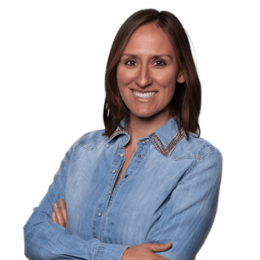#favouritemodels No. 28 - WRAP - Four hurdles of good decision-making and how you can overcome them.

At the same time, I cannot predict with reliability what effects my decisions will have on me and my environment. Managers in particular are expected to take on these risks and uncertainties. This requires courage and some ideas on how to organize and make decisions effectively.
The following process, called the WRAP model, developed by Stanford professors Chip and Dan Heath, is a helpful process for making better decisions. In their book Decisive, based on numerous studies of decision making, they divide the process of making a decision into four steps. In each of these steps, there are typical obstacles that often operate unnoticed. To counteract these obstacles, they propose a strategy for each step:
Step 1: You are faced with an important decision and are looking for a direct solution. In doing so, you run the risk of overlooking options and possibly pursuing the first, but not best, idea. To avoid this, you should expand your options. Chip & Dan Heath call this: Widen your options
What does that mean in concrete terms? A too narrow view focuses on the obvious and leads to potentially important facts not being taken into account. Often we ask, "Should I do this OR that?" Helpful ways to bring multiple options into view include:
-
Multitracking: Think AND, not OR.
You can ensure this by having your team develop at least 3 options that serve as a basis for decision-making. You will get even more options if you brainstorm in your team and deliberately ask for new, different or even deviant ideas. Through these preliminary considerations, you promote openness to new ideas and a combination of different ideas can possibly be developed. -
Vanishing options test
Ask yourself and the team: what if all the previous options were unfeasible and we had to develop new options?
Step 2: You analyze your options and fall into the trap of confirming your previous ideas and assumptions instead of disproving them and thus testing them for " watertightness". This so-called confirmation bias leads to a narrowing of your options and to a (too) fast commitment to an obvious solution. That's why it's important to do a reality check on your assumptions. Chip & Dan Heath call this: Reality-test your assumptions
What does this mean in concrete terms? Our unconscious tendency to seek information that confirms our initial assumptions can be circumvented by consciously applying various methods. For example:
- Asking disconfirming questions: Ask yourself: What is the biggest obstacle to option A? If I fail with option A, what would cause it?
- Consider the opposite: Try to consider the exact opposite of your previous option. And: Why could your previous preferred option be the entirely wrong solution?
Step 3: You make a decision and are (unconsciously) guided by short-term emotions. To avoid this, it is important to gain inner distance before making a decision. Chip & Dan Heath call this: Attain distance before deciding
What does that mean in concrete terms? Important decisions often stir us up emotionally. In order to not only be guided by these strong emotions, the following reflections help :
- Try 10/10/10: Suppose you make a decision for option A, how will you feel about it in 10 minutes? How in 10 months? And how in 10 years?
- Shift perspectives to gain distance: What would you advise your colleague/best friend/successor in this situation? This change of perspective automatically creates distance.
Step 4: You may be very confident about the decision you have made and the future development and you are optimistic that you have done the right thing. And if it doesn't work out as you thought? Then you just live with it. To prevent this over-optimism, it's helpful to prepare yourself to be wrong. Chip & Dan Heath recommend in their model: Prepare to be wrong
What does that mean in concrete terms? When we assess the future, we focus on the obvious information and draw our conclusions.
- Pre-mortem (Worst Case Scenario Backward): Play out the question: A year has passed and we have completely failed with Option A. Why? And what can we do now to prevent this from happening?
- Set a tripwire: Note what specific milestones should occur if Option A works well. Make sure to check the occurrence or non-occurrence regularly so that you can set up an alarm signal in case of emergency and develop a new solution option.
How does my favoritemodel help you?
From my point of view, the application of the specific creative methods and questions helps with the WRAP model. Just pick one of the methods, such as the "Try 10/10/10 " or the "Vanishing options test" and try it out for the next smaller or larger decision. This way you will playfully internalize the basic principles of the WRAP model and expand your personal repertoire of methods.











